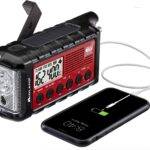When disaster strikes, ensuring the safety and well-being of every member of your family, including children and pets, becomes paramount. In emergencies, chaos and confusion can escalate rapidly, making it essential to have a comprehensive plan in place that addresses the unique needs of vulnerable individuals. In this guide, we’ll explore practical strategies and considerations for including children and pets in your emergency preparedness plan.
Recognizing the Vulnerabilities of Children and Pets
Children and pets have specific needs and vulnerabilities that require careful consideration during emergency situations:
Children:
- Limited Understanding: Depending on their age, children may have limited understanding of emergency procedures and may be unable to advocate for their own safety.
- Emotional Impact: Disasters can be traumatic for children, leading to fear, anxiety, and confusion. Providing emotional support and reassurance is crucial during such times.
- Dependency: Children rely on adults for protection, guidance, and care, making it essential for caregivers to prioritize their safety and well-being.
Pets:
- Limited Mobility: Pets may not be able to evacuate on their own, requiring assistance from their owners to ensure their safety.
- Special Needs: Pets with medical conditions or dietary restrictions may require special care and provisions during emergencies.
- Emotional Support: For many individuals, pets provide emotional support and companionship, making their well-being a top priority during crises.
Developing an Inclusive Emergency Plan
To effectively include children and pets in your emergency preparedness plan, consider the following strategies:
Education and Training:
- Teach children age-appropriate emergency procedures, including how to recognize alarm signals, evacuate safely, and seek help if separated from caregivers.
- Conduct regular drills and practice sessions to familiarize children with emergency protocols and reduce anxiety during actual emergencies.
- Train pets to respond to emergency commands and acclimate them to carriers or crates for safe transportation.
Communication:
- Maintain open and honest communication with children about the importance of emergency preparedness and the roles they play in ensuring their safety.
- Create a family communication plan that includes designated meeting points, emergency contacts, and methods for staying connected during crises.
- Use simple and reassuring language when discussing emergency scenarios with children to alleviate fear and confusion.
Personalized Emergency Kits:
- Prepare personalized emergency kits for each family member, including children and pets. Tailor the contents to meet their specific needs, preferences, and developmental stages.
- Pack comfort items such as favorite toys, books, or blankets to provide familiarity and emotional support during stressful situations.
- Include essential supplies for pets, such as food, water, medications, leashes, carriers, and identification tags with current contact information.
Evacuation Planning:
- Develop evacuation routes and assembly points that account for the needs of children and pets. Identify pet-friendly shelters or accommodations along evacuation routes.
- Practice evacuating with children and pets, ensuring that everyone knows their roles and responsibilities. Assign tasks to older children to assist with pet care and evacuation logistics.
Identification and Documentation:
- Ensure that children and pets have proper identification, including updated photos, microchips, and identification tags with contact information.
- Keep copies of important documents, such as vaccination records, medical history, and emergency contact information, in waterproof containers or digital formats for easy access during evacuations.
Prioritizing Safety and Inclusion in Emergency Preparedness
In emergencies, every member of the family, regardless of age or species, deserves to be included in the emergency preparedness plan. By recognizing the unique needs and vulnerabilities of children and pets and taking proactive steps to address them, caregivers can ensure the safety, well-being, and peace of mind of their entire family unit. From education and communication to personalized emergency kits and evacuation planning, incorporating children and pets into your emergency preparedness efforts can make all the difference when disaster strikes. Together, we can create a safer and more resilient future for everyone.







